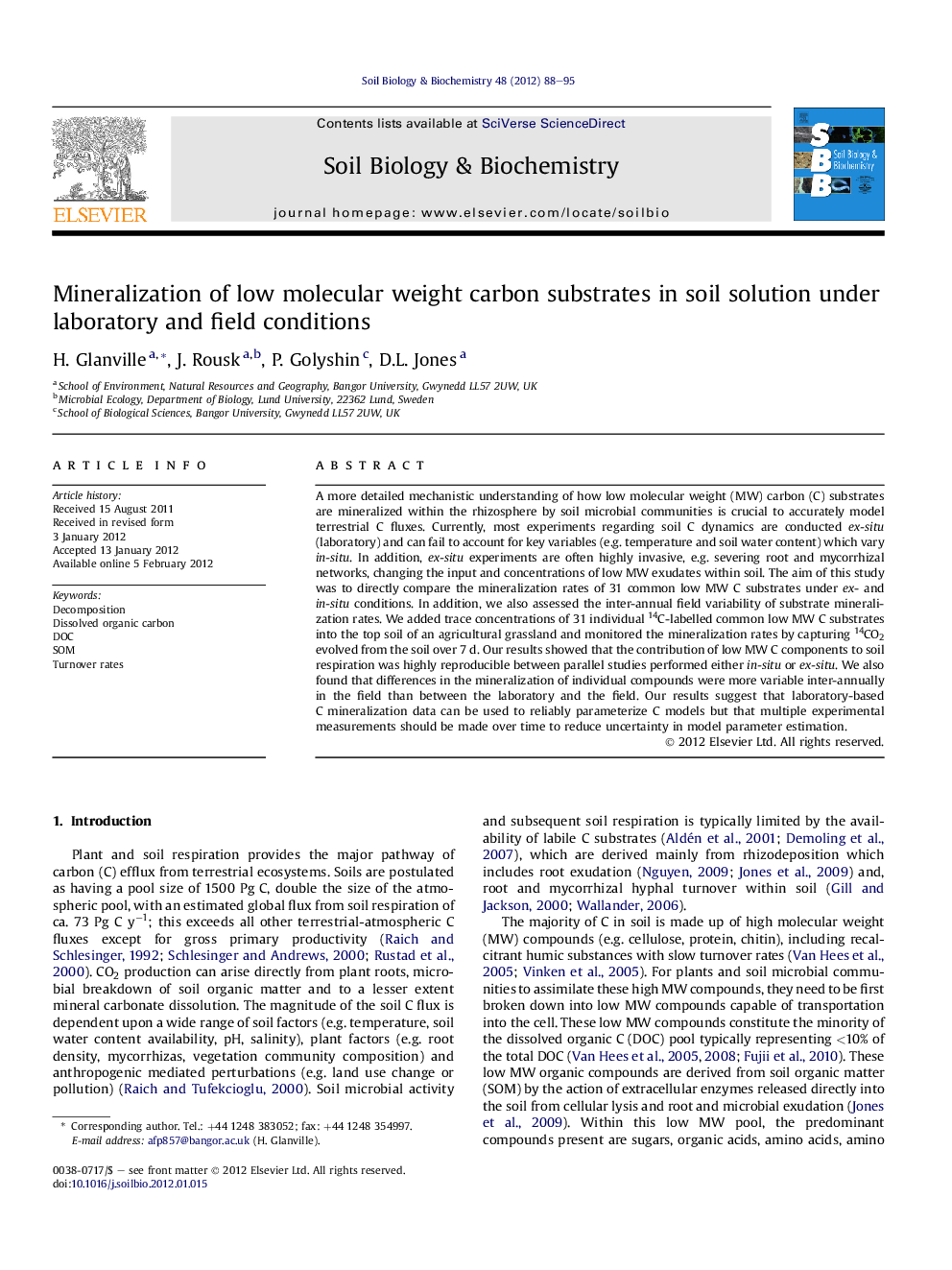| کد مقاله | کد نشریه | سال انتشار | مقاله انگلیسی | نسخه تمام متن |
|---|---|---|---|---|
| 2024937 | 1542636 | 2012 | 8 صفحه PDF | دانلود رایگان |

A more detailed mechanistic understanding of how low molecular weight (MW) carbon (C) substrates are mineralized within the rhizosphere by soil microbial communities is crucial to accurately model terrestrial C fluxes. Currently, most experiments regarding soil C dynamics are conducted ex-situ (laboratory) and can fail to account for key variables (e.g. temperature and soil water content) which vary in-situ. In addition, ex-situ experiments are often highly invasive, e.g. severing root and mycorrhizal networks, changing the input and concentrations of low MW exudates within soil. The aim of this study was to directly compare the mineralization rates of 31 common low MW C substrates under ex- and in-situ conditions. In addition, we also assessed the inter-annual field variability of substrate mineralization rates. We added trace concentrations of 31 individual 14C-labelled common low MW C substrates into the top soil of an agricultural grassland and monitored the mineralization rates by capturing 14CO2 evolved from the soil over 7 d. Our results showed that the contribution of low MW C components to soil respiration was highly reproducible between parallel studies performed either in-situ or ex-situ. We also found that differences in the mineralization of individual compounds were more variable inter-annually in the field than between the laboratory and the field. Our results suggest that laboratory-based C mineralization data can be used to reliably parameterize C models but that multiple experimental measurements should be made over time to reduce uncertainty in model parameter estimation.
► The turnover of 31 common low molecular weight (MW) carbon (C) substrates in soil was studied under different experimental conditions.
► Microbial C partitioning was unaffected by whether the experiments were performed in the laboratory or field.
► C turnover rates were significantly affected in laboratory experiments compared to those undertaken in the field.
► The findings are discussed in relation to the accurate parameterization of soil C models.
Journal: Soil Biology and Biochemistry - Volume 48, May 2012, Pages 88–95